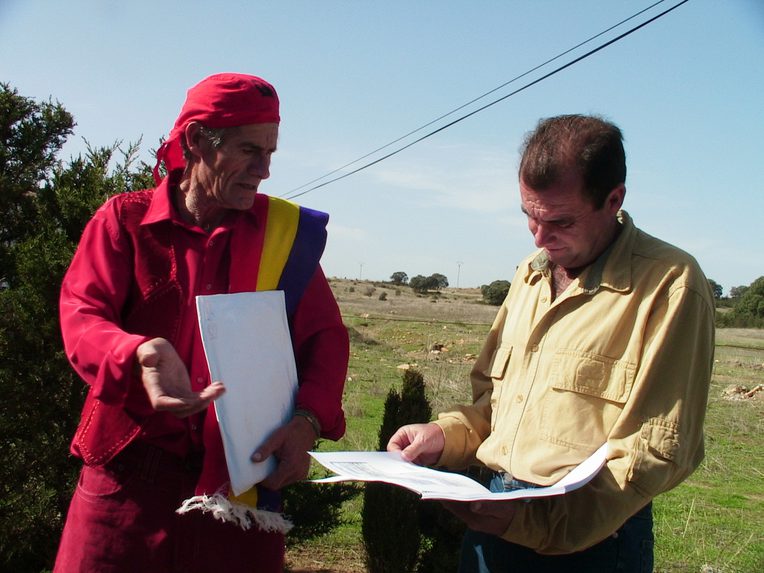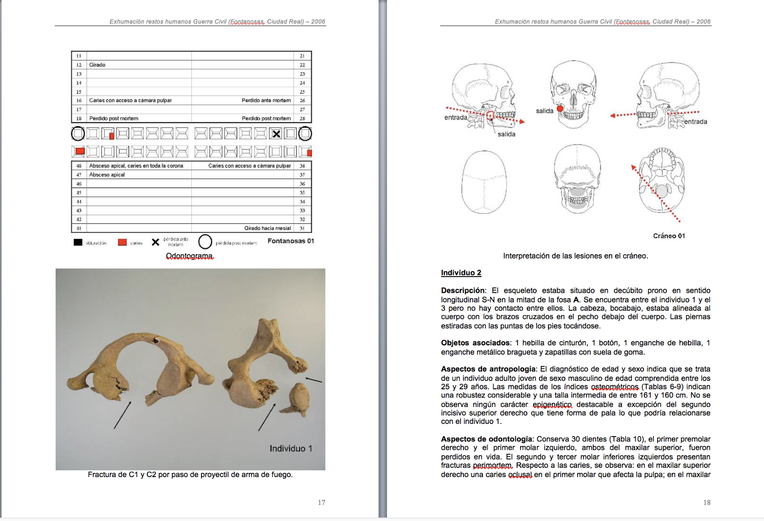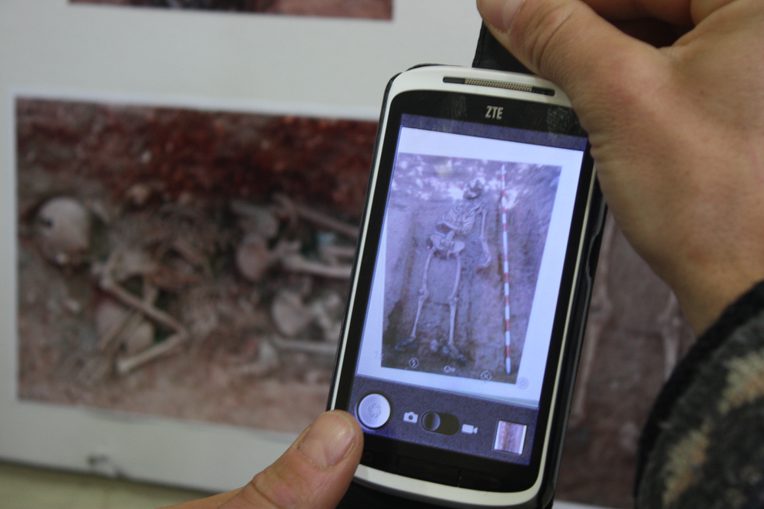Phantom Militarism and Counter-Forensics
From the Series: Review Forum on Writing with Light Magazine's Issue No. 1: Photography & Forensics
From the Series: Review Forum on Writing with Light Magazine's Issue No. 1: Photography & Forensics
This special issue of Writing with Light (WwL) on the use of forensic imaging in the process of searching for the disappeared tackles a wide variety of topics. These range from the very nature of forensics itself to the potential consequences of the hegemony of expert knowledge and scientific evidence in human rights discourses and practices, and to the myriad counter-forensic narratives, aesthetics, and political actions emerging in its shadows, under its influence, or swarming around its blind spots.
Inspired by this special issue, this commentary juggles ideas on the modalities of evidence and memory making derived from the predominance of forensic crime scenarios in the search for the disappeared, and how these re-inscribe the violence of the past in the visual and narrative cartographies of the present, spilling well beyond their area of expertise. The influence and seductive power of this forensic gaze on human rights violations does not exist in a vacuum but within the framework of its triumph in popular culture and the media, for which some authors use the term “CSI effect” to denote widely popular media products associated with forensic dramas. In doing so, it has the potential to profoundly colonize and shape our perception of the violent past, yet it may open fresh alternatives to confront it.
My reflections are grounded in long-term ethnographic research on the contemporary Spanish mass grave exhumation process involving the search for Republican civilians executed by Franco’s forces during the 1936–1939 war and the early postwar years, subtly exposed in Clemente Bernad and Álvaro Minguito’s collaborative photo essay (2022) and with references to the nuanced conversation between Alejandro Flores Aguilar, Craig Campbell, and Lee Douglas (2022).
This issue of WwL clearly shows that, beyond specificities, common themes cut right across the different case studies. Initially growing from minute, at times microscopic, evidence inscribed on individual bodies, forensics has erupted as a transnational global practice that is swiftly transforming the ways in which we perceive our bodies, our social relations, our ethical concerns, our notions of justice, and our perceptions of what is “real.”
The history of the wounded bodies found in these abandoned graves dates back to the repressive environment of the 1930s involving denunciations, kangaroo trials, imprisonment, torture and mistreatment, summary executions, hasty mass grave burials, gender specific violence, social stigma, forced exile and property seizures, to name a few. The memory work around mass graves and the exhumation and reburial of the executed skeletons is of the utmost importance to relatives of the victims and historical memory associations promoting their exposure and relocation to “proper” burial sites. Increasingly, it has also became paramount to different institutions across Spain governed by nationalist or left-wing parties, from the local to the regional and national level.
Yet how should these bodies be retrieved? Which narratives and ceremonials should accompany them? Who should be leading them? Most activists and relatives engaged in the internally diverse and troubled memorialist social movement agree that unburials and reburials only make sense if those executed during the war and postwar, later abandoned and then mistreated by the nation for decades, are somehow “dignified” in the process. Yet again, there are crucial disagreements on how to proceed—technically, politically, and symbolically—with the undoing and relocation of this stigmatized space of death.
Initially not everybody in the social movement was in flavor of exhuming the bodies. Without a legal umbrella, evidence would be erased. Fears about the potential pornographic uses of the bones in the media were also raised. But unburials snowballed. The early initiatives to commemorate and re-signify mass graves without unburials or public exposure of the bones were increasingly superseded after 2000. As technical exhumations multiplied, archaeologists and forensic doctors become crucial interpreters of the Civil War and post-war repression, and the executed skeletons took center stage in memorial practices, public debates, and the media (including new digital media). The logic, imagery, and aesthetics of the crime scene associated with the forensic rescue of the bodies in the graves started to take hold at different levels, increasingly becoming a dominant technology of memory making, often overshadowing or downplaying other alternative narratives of the past.
Transference to relatives, activists, and onlookers of this criminological route to the past occurs in diverse forms: in the “mobile seminars” where experts give attendees their interpretation of the day’s scientific progress at the exhumations (Bevernage and Colaert 2014); in the countless photos and videos taken by the different people attending the unburials, some of them uploaded and circulated on social media; in PowerPoint presentations by experts in the return ceremonies in local municipalities (see Clemente Bernad’s (2022) explicit photo, 27); in the forensic reports that accompany the return of the bodies to the relatives (see images below); in the use of forensic imagery in dignification rituals or memorial design (Douglas 2021; Ferrándiz 2014); and ultimately in the flow of scientific data to different types of non-official archives, either personal, familial, or managed by memorial associations, to name some relevant examples (Aragüete-Toribio 2017).
Through the combination of these miscellaneous transfer mechanisms, forensic medicine becomes the crucial memory science, and the persuasive crime-scene logics and aesthetics become a crucial gateway to the violent past in the public space. Paradoxically, the violent repression inscribed on the executed civilians, as deciphered by forensics, is bound to affect the memorial culture that attempts to unmake it. Elsewhere I have called this deeply embodied mirror effect, mediated by forensic interventions, phantom militarism (Ferrándiz 2019).




That the return of the marks of perpetration via forensic technical interventions brings the original violence back to the forefront of public debate seems as obvious as the potential they carry for opening up unexpected counter-forensic re-appropriations, and parallel or even contradictory image and memory worlds (Douglas 2022; Keenan 2014). Indeed, a wide variety of forensic products and by-products are constantly being co-opted and recycled as an integral part of commemorative funerary practices, such as corteges, communal meals, monoliths, gravestones, civil or religious burials, and political demonstrations.
This piece shows images of two such instances. Photographs taken by relatives, necessarily portraying forensic scenographies, may for instance take unexpected turns, eliciting novel forms of digital kinship when the skeletons are uncovered or displayed. Or a forensic snapshot of the wounded skull of a genetically identified victim may become embodied in a sizable tattoo, part of whose commemorative efficacy is the representational closeness to—and intimacy with—the original forensic image.
In Spain, it seems clear that, beyond their technical value, the progressive seeping of scientific presentations and representations into memorial acts and tributes lends them considerable symbolic and reparatory efficacy for the people present. The prestige of forensics feeds into the prestige and power of the broader memorial rituals. Only time will tell whether these popular, tactical, non-expert re-appropriations of forensic procedures and aesthetics create new forms of political engagement—along with fresh, imaginative, autonomous representations of past violence—, if they are just unexpected and short-lived spin-offs deeply anchored to their original source—mostly reinforcing their influence at the expense of alternative memorial devices and expressions—, or are merging both tendencies at the same time.
Aragüete-Toribio, Zahira. 2017. “Confronting a History of War Loss in a Spanish Family Archive.” History and Anthropology 28, no. 2: 211–34.
Bernad, Clemente, and Alvaro Minguito. 2022. “Photographing Forensics.” Writing with Light 1: 25–39.
Bevernage, Berber, and Lore Colaert. 2014. “History from the Grave? Politics of Time in Spanish Mass Grave Exhumations.” Memory Studies 7, no. 4: 440–56.
Douglas, Lee. 2021. “Seeing like a Scientist: Subjunctive Forensics and Shared Ways of Seeing in the Spanish Forensic Archive.” Huarte de San Juan. Geografía e Historia 28: 143–65.
———. 2022. “Undoing Absence. Reflections on the Counter-Forensic Photo Essay.” Writing with Light 1: 4–7.
Flores Aguilar, Alejandro M., Craig Campbell, and Lee Douglas. 2022. “Photography in the Space of Death.” Writing with Light 1: 12–23.
Ferrándiz, Francisco. 2014. El pasado bajo tierra: exhumaciones contemporáneas de la Guerra Civil. Barcelona: Anthropos/Siglo XXI.
———. 2019. “Unburials, Generals, and Phantom Militarism: Engaging with the Spanish Civil War Legacy.” Current Anthropology 60, no. S19: S62–S76.
Keenan, Thomas. 2014. “Counter-Forensics and Photography.” Grey Room 55: 58–77.